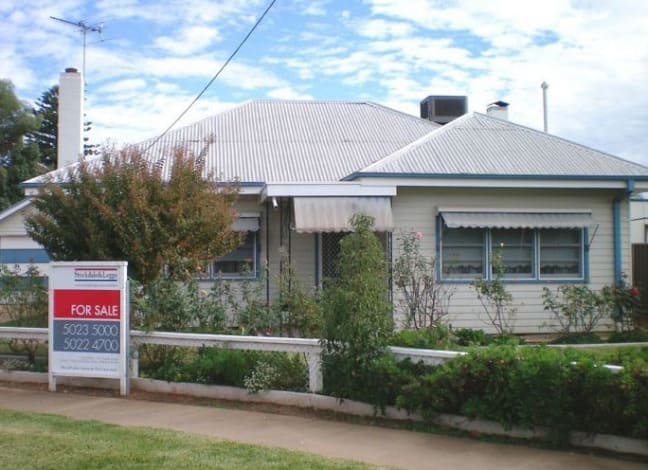5 top tips for buying in regional areas

1. Understand regional market cycles
Rural towns are scattered all over Australia, each with a distinct economy and lifestyle. But despite these differences, regional markets have common characteristics that might be unknown to city investors.
As a general rule, values tend to be more flat in the country than in the city, says Cate Bakos, buyer’s agent at Cate Bakos Property.
“You can get growth in regional areas, though you have to look for the right towns. You typically won't get the same levels of growth as in the metro areas,” she explains.
Phil Manning, property adviser at WBP Property Group, believes regional towns have shorter, less dramatic periods of value increases. He says growth waves tend to start in the city, then gradually ripple outwards. When this growth cycle ends, it stops in both the city and the country at the same time.
“As a result, the city has been in those conditions for a longer period and has enjoyed a greater level of growth, while the regions just don't have the prolonged periods of capital growth,” he says.
Overall, he believes value increases rarely occur in regional towns except in short spurts, similar to a “sugar rush”.
“It's a little burst at the introduction of infrastructure or a new employer but then the property settles back into its usual lull or flat market like it always has,” he says.
Indeed, investors should be wary of regional towns that are strongly outperforming metro markets – accelerated capital growth may be a sign that the market is unstable, Ms Bakos warns.
“If there are regional areas that are exhibiting stronger growth than their metro counterparts, it's usually because they're riding some kind of boom and that isn't necessarily something you can bank on in the long term,” she says.
For investors with an appetite for risk, this volatility can create opportunities. Ryan Crawford from Crawford Property says some regional centres, particularly those driven by mining, have much shorter market cycles than the city.
“The housing market in a resources town can turn a full cycle in as little as two to three years, as it responds to infrastructure and economic development activity in the area,” he says.
“In contrast, capital cities generally experience a full market cycle every seven to ten years.”
He believes investors armed with the right information can profit from these peaks and troughs.
“With thorough research, investors have an opportunity to take advantage of the more frequent and pronounced growth cycles in regional areas to generate returns and growth opportunities more often,” he says.
You can get growth in regional areas, though you have to look for the right towns.
2. Assess job opportunities
Capital growth is closely tied to rising incomes and stable employment. Given that unemployment tends to be higher in rural areas, a town’s job market can be one of the most important indicators for an investor to consider.
In a region with few employers, small changes to the local economy can have a disproportionate effect on property values.
“Regional values are affected by things that aren't even heard about in the city, like the closing of a factory. That doesn't even come on the radar in the city but it has a dramatic impact on employment opportunities in the regions,” Mr Manning says.
If investors want to avoid these dangers, the safest option is to buy into a town with a diverse economy and a range of job options, Destiny founder Margaret Lomas says. She warns buying into a town with a single employer could be disastrous if that industry pulls out of the region.
“Only buy when the growth drivers are evident – strong population growth, diversified employment opportunities, significant transport infrastructure and a shortage of housing,” she says.
Regional property values often leap upwards when a new employer comes to town. Some investors seek to profit from this trend by buying in before operations kick off. While Mr Crawford believes this approach can be rewarding, he suggests investors crunch the numbers first.
“Establish the proposed temporary and permanent workforce numbers. Identify where these workers will come from, how many are expected to relocate from other areas, and how they will be accommodated,” he says.
It may be that companies provide their own accommodation, or that an existing oversupply of properties will absorb the new arrivals – in these cases, new employers may have minimal impact on the local property market, Mr Crawford warns.
This type of investing could also veer towards speculation, particularly if investors buy before the project is up and running, Mr Manning believes.
“You're going to invest a lot of your money on the basis of a promise. That promise might not be kept and if it is kept, it might be kept in a partial way,” he says.
In his view, the ideal regional investment is within driving distance of a major capital city. If the local economy weakens in the town, workers have the option of commuting to the CBD, he says.
Investors should also consider future threats to the town’s economy, Ms Bakos says. Even if an industry is currently buoyant, investors need to ask what would happen in a downturn. In addition, changes to infrastructure or policy might leave a town vulnerable.
“If it's a very localised economy and a bypass could knock that town out of the main road, that might result in a significant downturn for money coming into the town,” she says.
Regional values are affected by things that aren't even heard about in the city.
3. Get to know the locals
Finding the best investment opportunities sometimes requires venturing into unfamiliar territory. If you’re buying in a new location, researching market conditions is essential, Ms Bakos urges.
“It takes more than just liking an area or seeing that it is doing well at the moment. You have to actually understand what's driving the growth or the consistency of the performance of the area,” she says.
At the same time, data can be misleading in areas with few transactions, according to Mr Crawford. A rising median price may only indicate a cluster of expensive sales, not that all property values are climbing, he says.
Aside from preliminary research, some investors may find it helpful to visit the area themselves. Ms Bakos believes there is no substitute for firsthand experience.
“It's one thing to look at something from a distance but knowing how the locals feel about certain streets or areas is really vital,” she says.
However, this hands-on approach may also have its drawbacks. Ms Lomas believes an in-person visit can cloud the investor’s judgement and distract them from the hard data.
“All viewing a property or area can do is make you emotional and then you will judge. Seeing an area is not a suitable way to decide if the area is right and very often our preconceived ideas can make us reject perfectly good opportunities,” she warns.
Whether or not an investor is on the ground, it is important for them to build relationships with their local team. Ms Bakos suggests meeting your agent or property manager face-to-face will lead to a better working relationship, as well as present a new source of local information.
Mr Manning does warn that agents may try to mark up prices if they know they are dealing with an outsider. He encourages investors to quiz the agent on their pricing.
“When anyone buys a property in an area they are not 100 per cent familiar with, ask the local agents to justify the price they're asking for the property and show comparable properties to use as a guide,” he says.
4. Pick your property with care
In a town with a limited pool of tenants and future buyers, property selection is critical.
Mr Manning says subtle differences such as which end of the street and which side of the road a property is on, can heavily influence its value in country areas.
“Everything matters in a regional area, even things that don't always matter in bigger cities,” he says.
He recommends sticking within a kilometre or two of the town centre and being close to local amenities like cafés, shops and transportation.
“The central part of that town will be attractive just like the CBD is attractive in the city,” he says.
Investors also need to identify the type of property that will attract residents. Mr Crawford believes buying a property with mass appeal is likely to minimise vacancies and maximise returns. He encourages investors to get information from local agents and property managers.
“Talk to local property experts to determine what types of housing are in greatest demand and if there are any particular streets to avoid,” he says.
If there are regional areas that are exhibiting stronger growth than their metro counterparts, it's usually because they're riding some kind of boom.
5. Know how the property fits into your portfolio
Some regional properties deliver slow, steady gains over a period of several decades. Others offer lightning fast returns with a correspondingly high risk.
Regardless of where investors are searching, they have to understand how a particular purchase will fit into their overall strategy, Ms Bakos says.
“Most people go for regional areas because they're looking for stronger rental yields. Or, alternatively, they might have a smaller amount of money to spend or to borrow, and they're looking for a bit of substance for their spend as opposed to a small unit,” she says.
Whatever their strategy, investors should ensure their expectations for the property’s performance are realistic, according to Mr Manning.
“Regional investing works so long as investors are not buying with unreasonable expectations about growth,” he says.
Ms Lomas encourages investors to carefully consider their purchase and avoid buying into an area for the wrong reasons – because it’s cheap, popular or recommended by a spruiker.
Above all, she urges investors not to veer from their investment strategy or change their research methods simply because they are outside the city.
“Buying regionally is no different than buying anywhere and all investors should research heavily before buying.”
Investor profile
Matthew Preston

Matthew and Yvette Preston
Floral Avenue, Mildura, Victoria
Purchase date: July 2011
Purchase price: $161,500
Estimated current value: $161,500
Rental yield: 7.41%

Matthew Preston’s regional investment did not pan out as expected – but the lessons he learned will hold him in good stead.
The first investment property Matthew bought was a house in Mildura, on the border of New South Wales and Victoria. He was attracted to the town by a report from one of the country’s leading data providers that predicted growth of seven per cent per annum over the next five years.
“I also liked the seven per cent yield, low buy-in price and the mixed industry – they have food, wine, a little mining and some tourism by the river,” he says.
Unfortunately, this level of growth failed to materialise. A neighbouring house recently sold for the same price Matthew paid three years ago.
On a more positive note, the property costs Matthew nothing to hold and delivers a healthy return.
“I could pay it off eventually and have $10,000 in positive cash flow per annum,” he says.
In the meantime, Matthew has acquired five more properties, with most clustered in the outer areas of capital cities. With his next purchase, he intends to give regional another try.
“I’m currently looking at buying a little unit in Orange in New South Wales,” he says.
This property would cost only $80,000 and attract a rent of $210 per week, for a total return of over 12 per cent. This substantial income will help him continue his investment journey.
“My logic is to have the high yield on the Orange property counter the lower yield in an inner-city property. Between them there should be an average of seven per cent plus return,” he says.
“This combined high yield will help me to continue borrowing from the banks to grow my portfolio.”